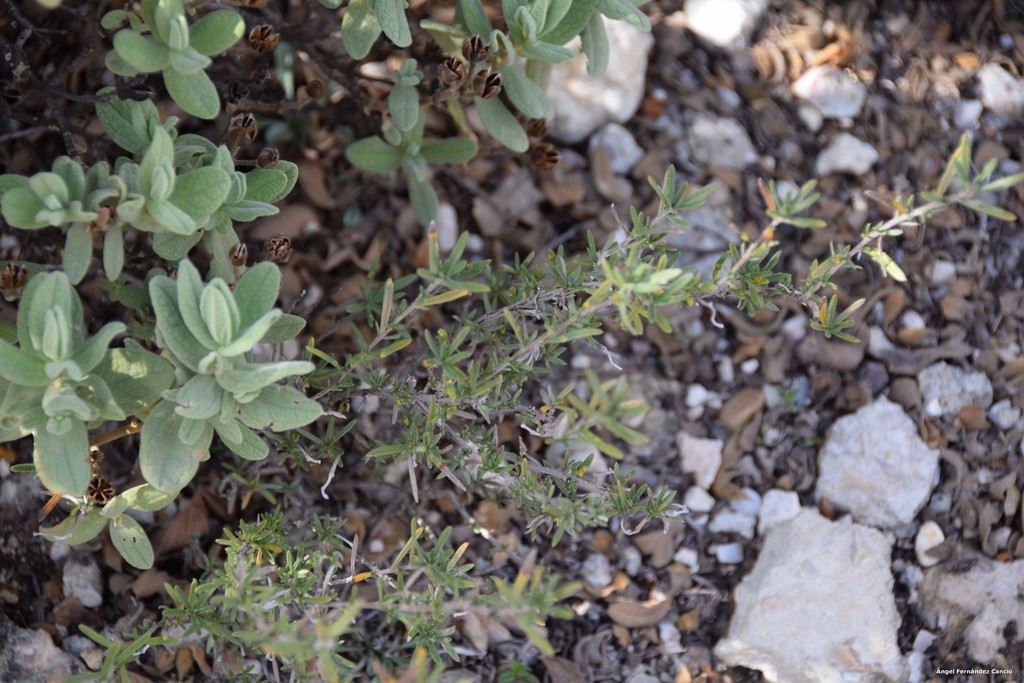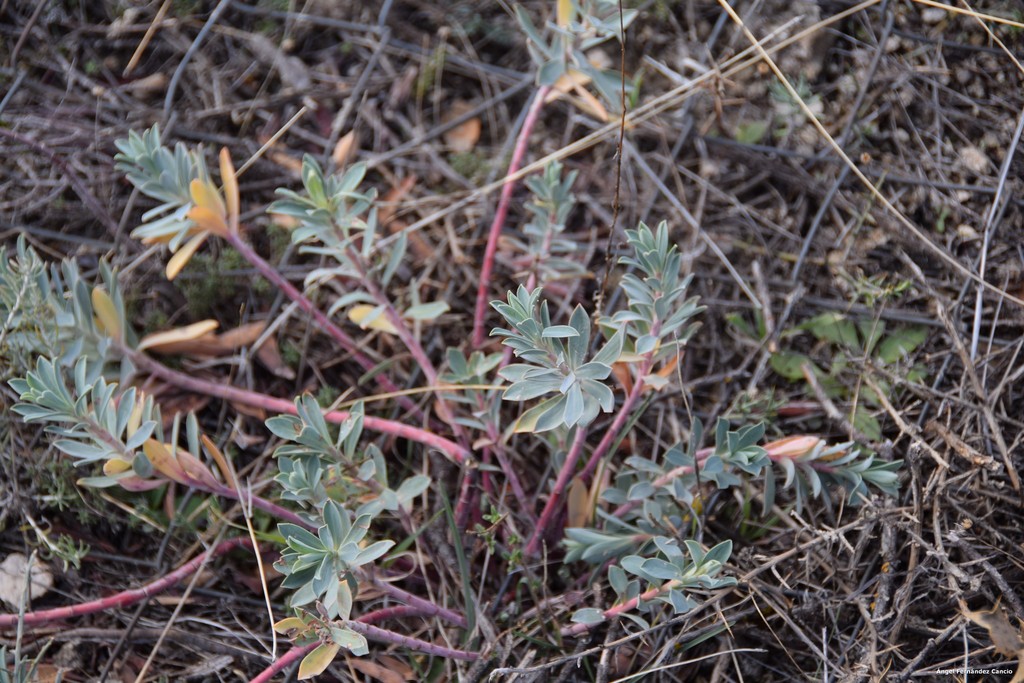The plant sociology, an application of iNaturalist
In the same way that links are established between plants and pollinators with an ecological and evolutionary nature, links can be established between plants that are part of stable groupings in space.
We are going to try to visualize the ecotone between the thermal formations of Quercus faginea with Q, coccifera and the formations of Quercus rotundifolia on basic soils in the same place.
The sampling site, Villalbilla in the province of Madrid (40.4360066667, -3.28879), has very little information prior to this study. The sampling has been by transect and 86 species have been obtained, 3 of them casual and one doubtful. The fit of the species defines the type of association in which they are framed and their management and protection possibilities.


The arboreal cover of the two associations is very altered and the scrubs occupy most of the place. We will try to visualize the scrub covers. In the Quercus rotundifolia domain, Genista scorpius and Thymus vulgaris are dominant.


And they form a dense cover of low scrubs, occupying almost 90% of the surface

and in a territory where gypsum conditions the landscape, so that the dominant hemicryptophyte is Stipa tenacissima with soil coverage of almost 80 % with chalky soils


The scrub cover has, therefore two structures, one, as outlined above, of low scrubs where Genista scorpius is dominant and another where Genista scorpius appears accompanied by higher scrubs formed by Cistus albidus, Stipa tenacissima and Quercus coccifera.

On these two structures the wooded formations will try to develop towards a single place where Q. rotundifolia is dominant.

and Q. faginea in another

In the transect, there is a constant edge effect between nitrophilic plants influenced by human activity in the urbanized area and climatological plants. A total of 23 taxa do not have a clear ascription in the climactic formations and belong to allochthonous, ruderal or weed groups with greater or lesser need for nitrogen.
Therefore, 50 taxa remain, excluding three that are found in the humid zone of the ravine. These taxa must be included in one of the inventories of the phytosociological types described for the vegetation of the area.
When making this inclusion, there are two associations that have a good adaptation to the floristic vector and they are the Quercus rotundifoliae forests and the scrub formation of Salviares, splegares and calcareous thyme. In both, 44 taxa of the 50 found have been incorporated. Both associations are territorially extensive and rich in species.
The choice of which of the two best represents the study territory is based on a more or less homogeneous territorial choice (ideally it should be homogeneous) and a floristic choice, since both associations have the presence of tree species. The restricted territory is chosen to be the sampling zone that keeps most of the climate-dependent taxa, within in a range of 200 m, and where the entrance of new taxa is very low. It should be noted that in the conceptual definition of Quercus rotundifolia woods most of the formation has a large tree cover (see Quercetum rotundifoliae at www.sivim.org), which does not occur in our territory. In the second association we find that six sampled species are among the first ten with high affinity with scrubs (Lino differentis-Salvietum lavandulifoliae at www.sivim.org), for which we associate the sampled territory with the Salviares, splegares, and calicous thyme trees. . These species are:
Salvia officinalis lavandulifolia

Helianthemum cinereum rotundifolium

Linum suffruticosum

Helianthemum hirtum

Lithodora fruticosa

Euphorbia nicaeensis

A review of the photos taken with the frequency of the species with the highest presence is indicative of the relative frequency of the taxa in the transect.
Specie Frecuency
Genista scorpius 20
Quercus coccifera 14
Quercus faginea 14
Cistus albidus 13
Stipa tenacissima 13
Thymus vulgaris 13
Quercus rotundifolia 10
Helianthemum 9
Prunus amygdalus 9
Salsola tragus 9
Helianthemum hirtum 7
Lotus dorycnium 7
Medicago lupulina 7
Pallenis spinosa 7
Bupleurum fruticescens 5
Sonchus tenerrimus 5
Centaurea aspera 4
Dactylis glomerata hispanica 4
Helichrysum stoechas 4
Representative species are present, as can be seen in the photos, but quantitatively they have less strength than Genista scorpius, Stipa tenacissima, Lotus dorycnium or Thymus vulgaris for example; however, we accept it within the meaning of the association.
Other associations, such as nitrophiles, the hydrophilic bottom of the ravines and the areas with the highest presence of gypsum have not been included in this example. Neither has the phytosociological nomenclature been used almost due to the nomenclatural complexity, nor can this example be considered a standardized inventory sampling, nor does it have validity as such.
The objective is to show that iNaturalist can be used to carry out this type of spatial stability studies of associated plants and the physiognomy of vegetation structures and the photographic association between species can be visualized, which would later be integrated into higher order units. The fundamental information for iNaturalist at the species level is preserved by including the next photograph of each taxon, which is an essential condition for making an inventory (with the exception of 3 taxa whose identification is clear by physignomy and geobotany, but cannot be taxonomically validated from a systematic botany point of view) The photos of various species, even at a distance, are all identifiable and linked.
This type of study can be done in a more systematic way where there is a previous phytosociological tradition and it is yet to be discovered where this discipline has not yet been applied.
Therefore, nothing is detracted from the interests of iNaturalist and these studies open up new complementary and enriching possibilities.







Comments
Very interesting article!!! I agree with the fact that iNat expands our horizons. The pictures remind me of my walks through the Phrygana here in Greece :)
Hello
Thank you very much for your comment; It is likely that if one walk makes us remember another, it is because they contain common traces marked by climate, soil and species. Vegetation is a (vicarious) mirror that says the same thing with different, similar or equal species and associations. It is interesting to discover that world. All the best
Add a Comment